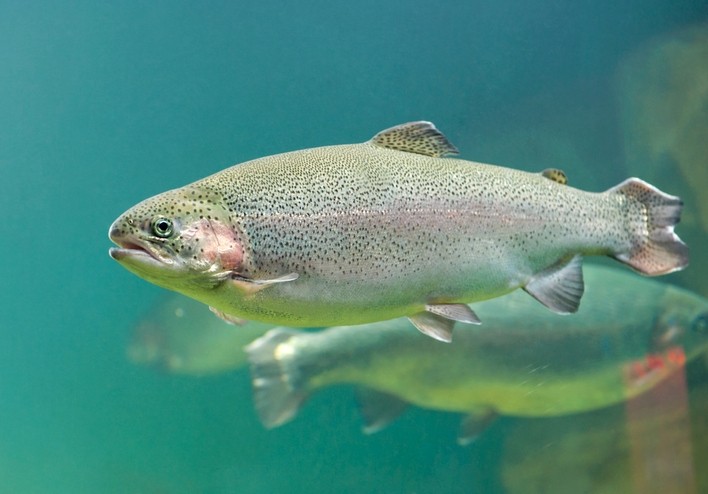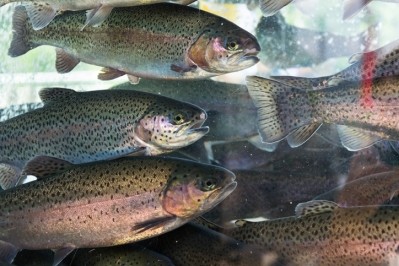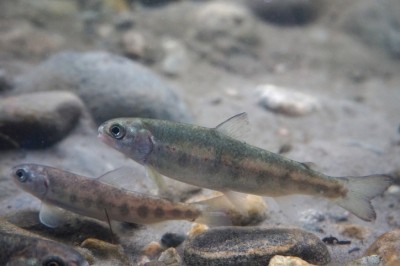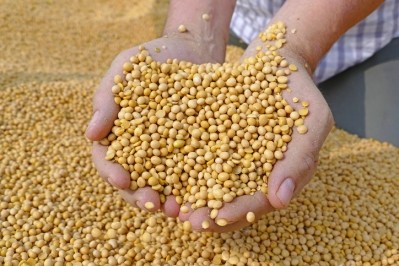special edition: aqua feed innovation
Supplemental β-glucan may mitigate enteritis in farmed trout

An international team of researchers from the US and China explored the use of β-glucan as a feed additive for fish experiencing enteritis.
Researchers published details of their work in the journal, Aquaculture.
“The aim of the present research was to explore TNBS-induced enteritis model in rainbow trout and then evaluate the efficacy of β-glucan in mitigating enteritis,” they said.
The researchers found that fish receiving 0.2% β-glucan had improved weight gain, specific growth rate and feed efficiency. Fish showed the largest loss in weight gain related to enteritis on day 6 post-infection with Trinitrobenzene Sulfonic Acid (TNBS), however, that was attenuated in fish on the 0.2% supplement.
Adding either 0.1% or 0.2% β-glucan to the diet lowered the total mortality rate during the period of enteritis, they said. Alterations in white blood cells, red blood cells, hemoglobin were smaller for fish receiving supplemental β-glucan and enteritis-induced changes in serum antioxidant activities were reduced.
“This is the first study to induce enteritis with TNBS in rainbow trout. Besides that, 0.1% and 0.2% β-glucan could dose-dependently mitigate TNBS-induced enteritis in rainbow trout,” the researchers said. “This research provides the evidence to support β-glucan as a therapeutic or protective substance in commercial fish enteritis.”
Addressing enteritis
In fish, the intestine has several functions including in food digestion, nutritional absorption and immune production, the researchers said. However, intestinal inflammation is common and led to economic loss in aquaculture production.
Inflammation can be prompted by several factors including food, environmental toxins and pathogens, they said. “For example, Vibrio anguillarum and Aeromonas salmonicida have been respectively studied in the intestinal inflammation of Atlantic cod (Gadus morhua L.) and common carp (Cyprinus carpio L.),” they added.
“In addition, soybean meals induce intestinal inflammation and pathomorphological changes in sharpsnout seabream (Diplodus puntazzo) and Japanese seabass (Lateolabrax japonicus),” they said. “Although there are multiple factors inducing enteritis, rapid and appropriate enteritis model in fish research is still absent which hinders the development in testing potential therapeutic agents.”
In mice, trinitrobenzene sulfonic acid (TNBS) can induce enteritis and produce histopathological and clinical features similar to the disease, they said. However, little work has been done using TNBS to induce enteritis in fish.
“In the present study, TNBS was introduced to establish enteritis model in rainbow trout which will provide a universal method to study enteritis in various kinds of fish,” the researchers said.
Why feed β-glucans?
Much of the research focused on addressing or alleviating intestinal inflammation in fish looks at controlling the amount of soybean milk in fish diets, the researchers said.
But that process does not work with inflammation stemming from a chemical or bacterial source and a “universal therapy” is needed to reduce enteritis sparked by various causes.
β-glucan has been linked to resistance to bacterial infections in multiple kinds of fish including Atlantic salmon, carp and rainbow trout, they said. Although widely studied in rats, the use of the supplement to address enteritis is rarely done in aquaculture.
“It is meaningful to study if β-glucan can mitigate enteritis induced by the non-bacterial factors in rainbow trout,” they said.
Feeding trial details
Three diets were used in the feeding trial – a commercial feed with 42% crude protein and 12% crude lipid acted as the control diet, and a commercial β-glucan diet was added to the control diet to generate experimental diets with 0.1% and 0.2% β-glucan (BG), the researchers said.
During the trial, 360 rainbow trout were given one of the three diets for 30 days, they said. Fish were weighed on days 1 and 31 of the feeding trial and days 3, 6 and 9 post enteritis challenge.
A selection of fish on each diet was harvested on day 31 and the remaining fish had enteritis induced with TNBS, the researchers said. Tissue samples were collected on days 3, 6 and 9 post intestinal inflammation (dpi).
Blood samples were taken for analysis on day 31 and days 3, 6 and 9 dpi, intestinal segments also were collected for histological analysis and gene expression testing, they said. Pathomorphological changes were evaluated for severity.
The specific growth rate (SGR), weight gain (WG), feed efficiency (FE) for days 1 to 31 and the weight loss percentage (WLP) connected to the enteritis challenge were calculated, they said. Induced mortality also was noted.
Results
Adding the β-glucan to fish diets affected WG, SGR and FE following the 30-day feeding trial, the researchers said.
“Compared with the control group, 0.2% β-glucan improved the three growth parameters. However, there was no significant difference between the control group and 0.1% BG,” they said. Fish on all three diets showed body weight loss following the start of enteritis but fish on the 0.1% and 0.2% diets had lower percentages of weight loss by day 3 dpi, they added.
Fish on the supplemented diets also experienced lower mortality rates following the enteritis challenge, they said. At the end of the trial, the control group had a 42% mortality rate, while fish on supplemented diets had 24% and 14% for 0.1% and 0.2%, respectively.
“0.2% dietary β-glucan could effectively reduce enteritis-induced cumulative mortality rates and mitigate intestinal lesions which shows the feasibility of β-glucan as a therapeutic agent to prevent fish enteritis,” they said.
Histopathological damage increased for fish on all diets through day 6dpi but remained lower for supplemented fish, the researchers said. Adding, “The structures of villi, submucosa, and muscular layer were completely broken down and severe luminal sloughing of cellular debris occurred in the CG while these abnormalities were significantly attenuated in the 0.1% and 0.2% BG.”
“Only villi were damaged while the submucosa and muscular layer were widened but intact in the 0.2% group,” they said. The repair process also was more significant in fish on the supplemented diets.
The feed additive also reduced changes to red blood cells (RBC) white blood cells (WBC) hemoglobin level (Hb) during enteritis, they said. And it lowered enteritis related alterations in serum antioxidants.
Serum total serum superoxide dismutase (T-SOD) and catalase (CAT) activities were increased for all fish following the TNBS challenge, but the increase was reduced for fish on the supplemented diets compared to the control, they said. The challenge also increased glutathione (GSH) and glutathione peroxidase (GSH-Px), but those changes were alleviated for fish on the 0.2% BG diet.
Myeloperoxidase (MPO) levels also increased through day 9dpi for fish on the control and 0.1%BG diets, but not for fish on the 0.2% diet, the researchers said.
“After enteritis, T-AOC [total antioxidant capacity] showed an increased trend until 6 dpi and then dropped to initial or lower levels on 9 dpi in all groups,” they said. “T-AOC activities in the 0.1% BG and 0.2% BG were significantly lower than in the CG during enteritis.”
The feed supplement also regulated gene expression of cytokines following enteritis, they said.
Source: Aquaculture
Title: β-glucan mitigated trinitrobenzene sulfonic acid-induced enteritis in the rainbow trout (Oncorhynchus mykiss)
Authors: L. Ji, S. Fu, R. Ji, X. Li, Y. Liu
DOI: doi.org/10.1016/j.aquaculture.2019.734393















